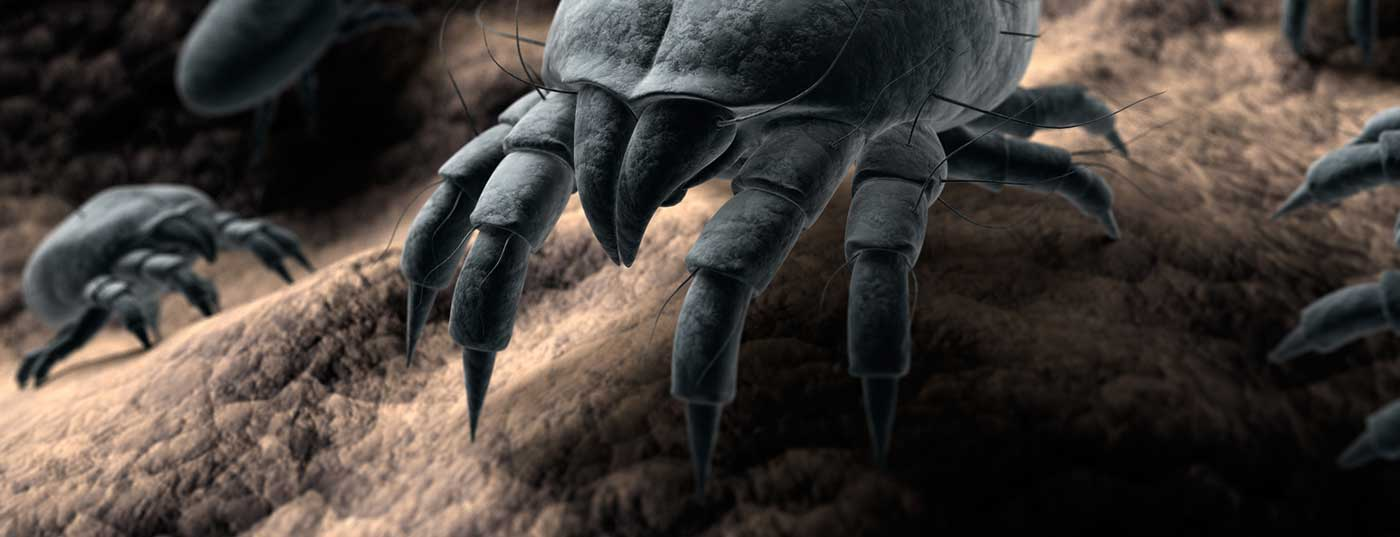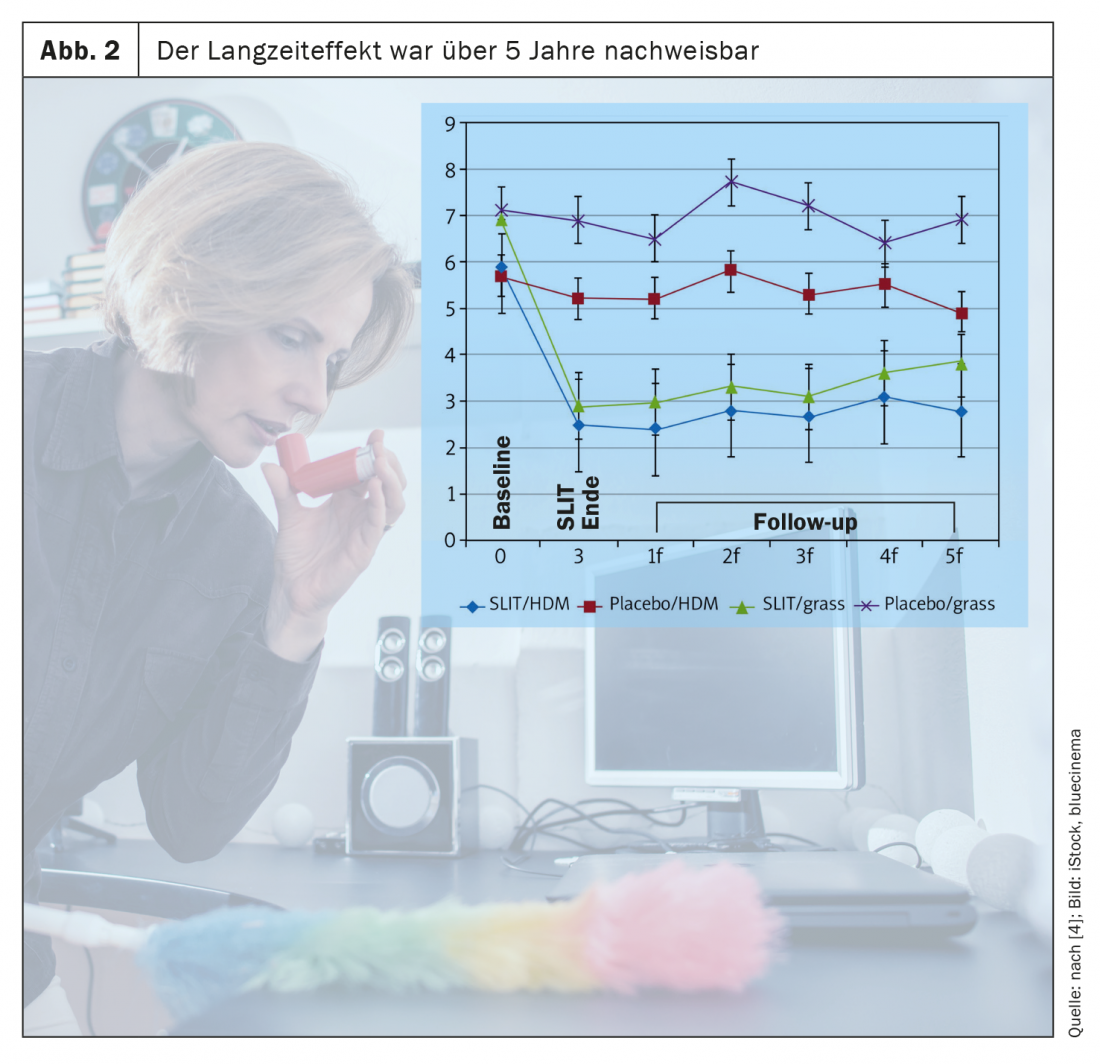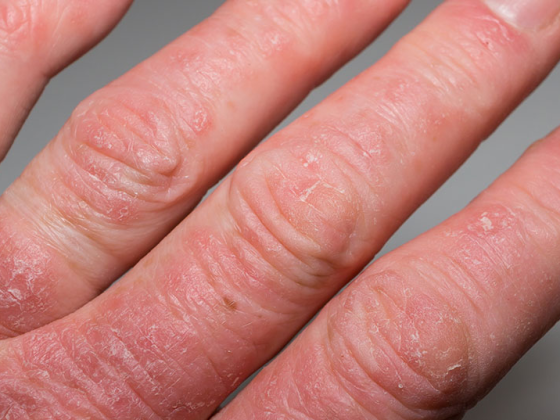The past year has not brought much news in terms of large studies on sublingual immunotherapy (SLIT) that are suitable for approval. There were new findings, particularly on the effect of birch pollen SLIT and on house dust mite (HDM), for which a new tablet will soon be launched on the European market.
It has been known for some time that SLIT with birch pollen tablets also improves symptoms during the alder and hazel pollen seasons, and in the exposure chamber also symptoms due to oak pollen. This effect has now also been demonstrated in patients during the oak pollen season, explained Prof. Dr. Randolf Brehler, head of the Department of Dermatology at Münster University Hospital [1].
An evaluation of birch pollen SLIT during the oak pollen season showed that the combined score decreased by 25% compared to placebo-controlled patients, the symptom score decreased by 22%, and the medication score decreased by 32% (Fig. 1). Thus, ithas been shown that oak pollen allergy is positively affected with birch pollen immunotherapy.
For Prof. Brehler a quite logical result, the oak belongs finally like the alder, hazel and naturally birch to the birch-homologous group, with which a therapy with birch pollen extract is effective. For beech, the effect has not yet been demonstrated, but is likely. In contrast, the sweet chestnut is less cross-reactive.

Second HDM tablet on the way
For the therapy of house dust mite allergy, various SCIT preparations as well as an SLIT tablet are currently available. A second SLIT tablet is already available in Asia and will also be launched in Europe.
The pivotal study for this involved 1607 patients between the ages of 12 and 65 years [3]. The symptom-medication score (SMS) was determined after 12 months. The tablet contains Dermatophagoides pteronyssinus and D. farinae extract, in the treatment regimen 100 units were administered on the first day, 200 IR on the second day and full dosage of 300 IR from day 3. The placebo effect in the study was immense, as Prof. Brehler pointed out, but this should not be particularly surprising. However, apart from this, the verum-treated patients performed statistically significantly better, the difference between the two groups being 16.9%. The study confirmed that 12 months of treatment with a 300-IR sublingual HDM tablet was effective for treating moderate to severe HDM-induced allergic rhinitis (with or without concurrent mild controlled asthma). Thus, according to the study authors, the tablet is a treatment option that minimizes the need for rescue/relief medications and provides effective symptom relief.

HDM tablets are statistically significantly effective in studies, with efficacy at <20% for rhinoconjunctivitis, Prof. Brehler explained. The question that arises, he said, is whether SCIT with dust mite extracts is more effective. However, current studies with the conditions required today have not been published for this purpose. “However, we know that some products have not been able to reach the target criteria in previously unpublished studies.” Prof. Brehler concluded by noting that he personally believes that for rhinoconjunctivitis caused by house dust mite, the normal SMS is probably a less appropriate parameter. Rather, he said, there is discussion about preventing asthma exacerbations in HDM allergic patients, which seems to be a more favorable parameter.
Does the effect last after the end of therapy?
For grass pollen SLIT, evidence shows that the effect lasts for 2 years after the end of 3 years of therapy. But how does it behave for other allergens? And does the effect last longer? In a long-term effect study, patients >60 years from double-blind, placebo-controlled trials were followed up for 5 years. They had previously been treated for 3 years with grass pollen 300 IR (n=47) or HDM extracts 300 IR (n=38) or placebo (n=55 and 34, respectively). The rhinitis score combined with the drug scores did not show a large difference with placebo/grass (a small difference can always occur due to the varying intensity of pollen), whereas SLIT/grass produced a constant benefit over 3 years and then increased again slightly, although statistically non-significantly (Fig. 2). A similar pattern was observed with HDM-SLIT treatment, where the effect was relatively consistent over five years.
Thus, 5 years after the end of therapy, there was significant efficacy of SLIT with grass pollen and HDM compared with baseline, with only slight deterioration compared with the time point after 3 years of SLIT.
Congress: Allergo-Update 2021, online event
Sources:
- SCIT and SLIT with aeroallergens. Allergo Update 2021, 3/19/2021, online event.
- Nolte H, et al: Treatment Effect of the Tree Pollen SLIT-Tablet on Allergic Rhinoconjunctivitis During Oak Pollen Season. J Allergy Clin Immunol Pract 2021; in press.
- Demoly P, et al: A 300 IR sublingual tablet is an effective, safe treatment for house dust mite-induced allergic rhinitis: An international, double-blind, placebo-controlled, randomized phase III clinical trial. J Allergy Clin Immonol 2020; 147 (3): P1020-P1030; doi: 10.1016/j.jaci.2020.07.036.
- Bozek A, et al: Long-term effects of allergen sublingual immunotherapy. Postepy Dermatol Alergol 2020; 37 (6): 943-947; doi: 10.5114/ada.2019.85365.
InFo PNEUMOLOGY & ALLERGOLOGY 2021; 3(2): 26-28 (published 5/4-21; ahead of print).












